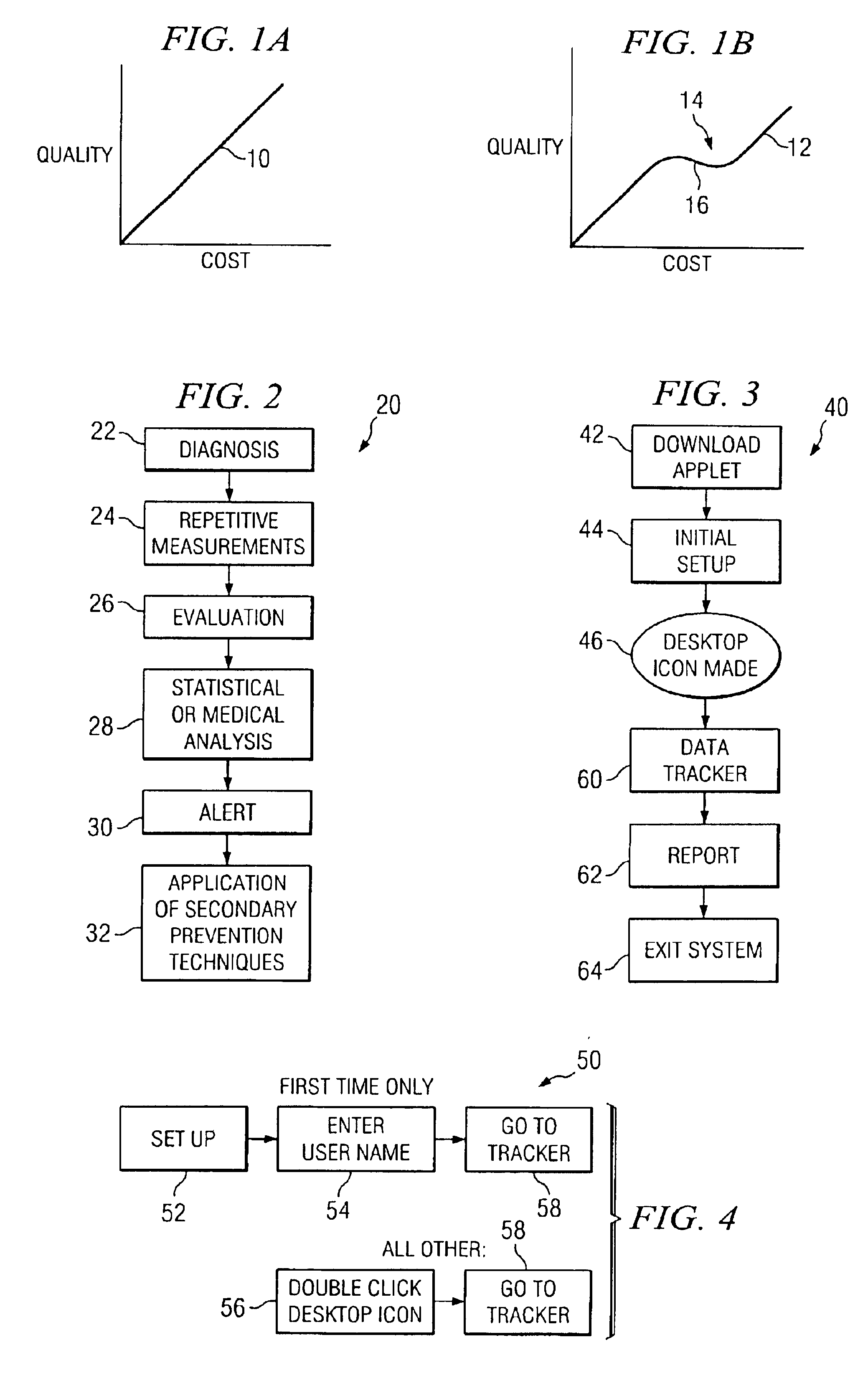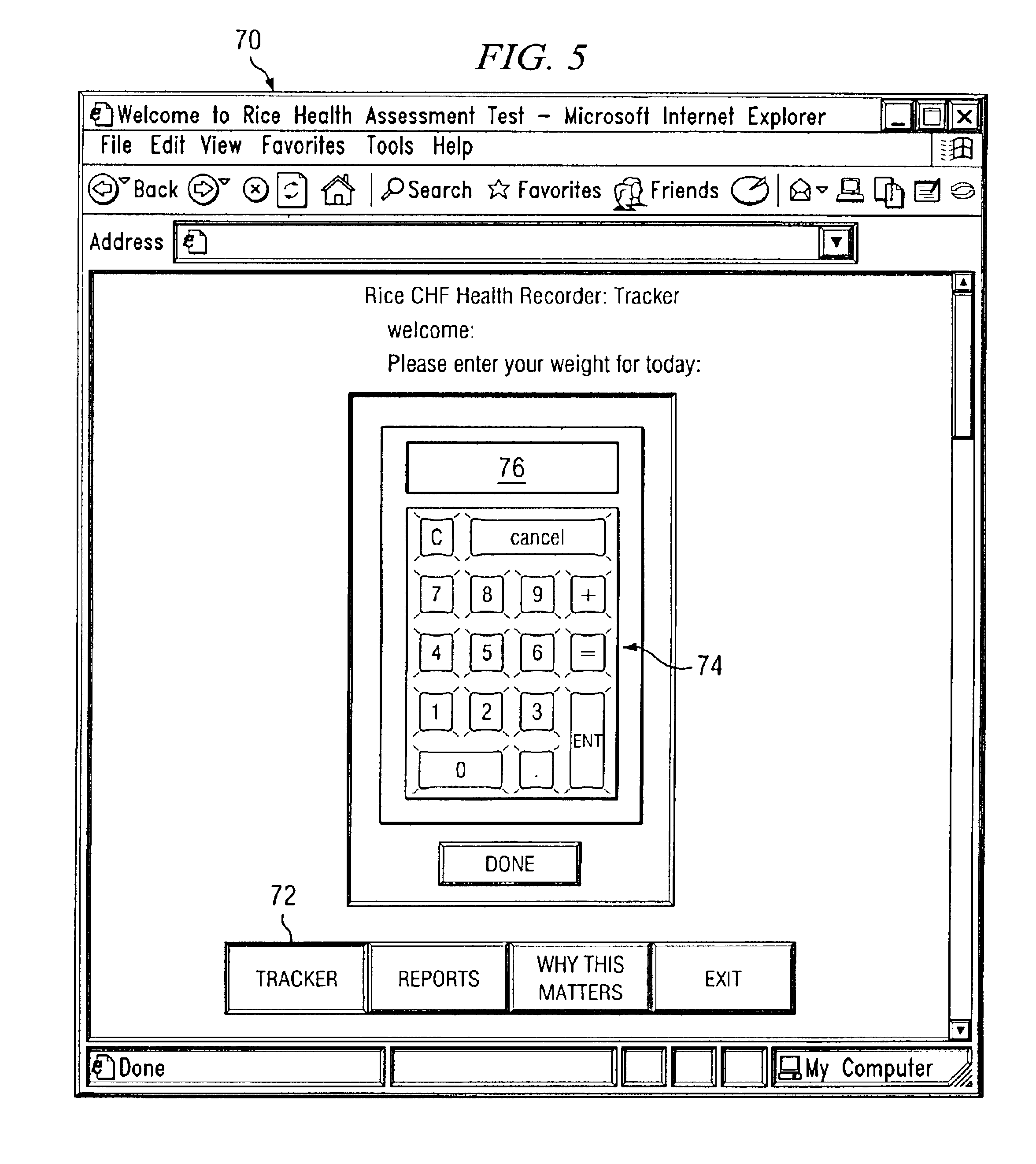System and method for repetitive interval clinical evaluations
a clinical evaluation and repetitive interval technology, applied in the field of health care systems, can solve the problems of higher severity-adjusted mortality rate, lower quality of health care, and higher cost, so as to improve patient quality of life, prevent exacerbation, and reduce the associated health care cost
- Summary
- Abstract
- Description
- Claims
- Application Information
AI Technical Summary
Benefits of technology
Problems solved by technology
Method used
Image
Examples
Embodiment Construction
[0033]The present invention provides a method and system for improved identification and evaluation of exacerbations and complications relating to chronic diseases. One embodiment of the present invention relates to a system to optimize chronic disease care. For purposes of the present invention, chronic disease care optimization may be defined as the process of early identification of exacerbations, complications and recurrences. Early identification allows a patient to alert his healthcare provider, receive preventive or early stage remedial treatments, and / or avoid costly and intensive remedial medical interventions and / or hospitalizations. The collected data leads to early identification and the opportunity for alerting the patient or the health care provider of a situation.
[0034]One embodiment of the present invention may use a non-linear model, such as a chaotic model. However, various non-linear models may be envisaged. In chaotic models, a sensitive dependence exists on mode...
PUM
 Login to View More
Login to View More Abstract
Description
Claims
Application Information
 Login to View More
Login to View More - R&D
- Intellectual Property
- Life Sciences
- Materials
- Tech Scout
- Unparalleled Data Quality
- Higher Quality Content
- 60% Fewer Hallucinations
Browse by: Latest US Patents, China's latest patents, Technical Efficacy Thesaurus, Application Domain, Technology Topic, Popular Technical Reports.
© 2025 PatSnap. All rights reserved.Legal|Privacy policy|Modern Slavery Act Transparency Statement|Sitemap|About US| Contact US: help@patsnap.com



